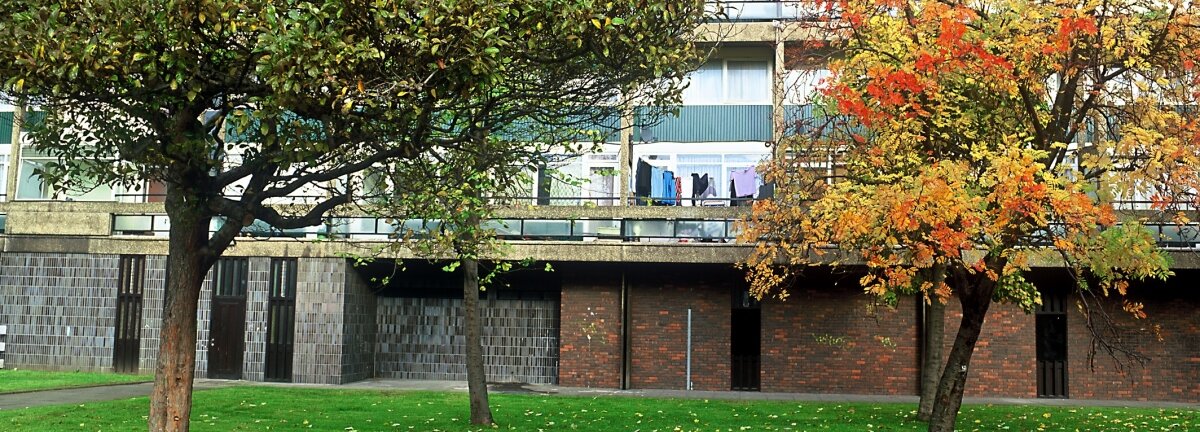Estate of the nation

Council estates and the great estates of central London have more in common than one might think – yet only one faces the threat of demolition.
There’s a new exhibition looking at London's great estates called 'How London’s landowners shape the city'. The estates in this exhibition (on at the NLA until 19 December 2014), are not council estates, like the one I live on, but classic estates. They are London's 'great estates' and have been a huge success story: the green squares, regular frontages, homogenous materials and detailing are characteristic of some of London's most expensive and coveted neighbourhoods.
Bedford Estate
Have a walk around central London and you'll no doubt admire the Georgian elegance of Bedford Square, the Victorian stucco splendour of Belgrave Square or the opulent Neo-Renaissance brick mansions around Cadogan Square. However, if you then take another look at London's council estates, you may notice something quite distinctive: council estates have a lot more in common with their posh relatives than you may have realised...
Alexandra Road Estate
So what are the commonalities between great estates and council estate? First of all, council estates, like the great's, have been developed by a single landowner over a short period of time. They too have a standard design language: brick (sometimes red, sometimes yellow), concrete, and panels of some sort. This clear and recognisable language creates a unified sense of place and retains the visual integrity that is akin to the character of the great estates. From my Southwark estate I look over solemn brick blocks arranged around a lush piece of green in the middle with a black iron fence around it – not too dissimilar from what makes the ingredients of the great estates.
New ideas of urban living inspired council estates as much as the great estates. Some 20th century estates have introduced innovative concepts which are as astounding as the work of Thomas Cubitt, the man responsible for vast parts of Belgravia. In the 1950s, Alison and Peter Smithson conceived the clever ‘Streets in the sky’ idea, creating elevated walkways that access the flats. You can see an example of this in Park hill in Sheffield one of the first places to realise this idea.
Another great outcome of forward thinking is Neave Brown's 1970s Alexandra Road estate where he combined traditional terraces and high density living. Both estates are remarkable examples of architectural heritage, and both listed at Grade II*, the second highest listing grade. In almost all cases, council estates provide well-considered floor plans, balconies, loads of storage space, spacious, bright and airy rooms and loads of nice facilities, lifts, community rooms, lawns, shops and hair dressers. A few decades ago, those assets were the ultimate expression of modernity and set the council estates apart from their grander but old-fashioned cousins.
The renovated Park Hill Estate in Sheffield
Now, council estates are out of fashion and under threat of demolition. With the exception of the Barbican and the refurbished Brunswick Centre, none are particularly loved. They turned into sink estates and have become synonymous with social conflict.
Regeneration, demolition and rebuilding seem to be the only solution, accepting the destruction of local communities and the loss of much needed affordable council housing and striking architecture. Some outstanding examples, including Robin Hood Gardens by the Smithsons, are about to disappear.
Does this have to happen? Successful examples of new life for council estates can be found across the country.
The renovation on the reborn Park Hill estate in Sheffield was shortlisted for this year's Stirling prize. Glastonbury House in Pimlico, a tired 1960s residential tower block, has turned into a showcase space for innovative environmental projects! Looking at the amount of embodied energy in the existing buildings, refurbishment and reuse should always be a key consideration.
We in the Cabe team strongly support local authorities and communities who are looking to refurbish or rebuild their council estates and we've done a lot of work, from Design Review to workshops, to assist them with this objective.
Subscribe to our newsletter
Want to keep up with the latest from the Design Council?
